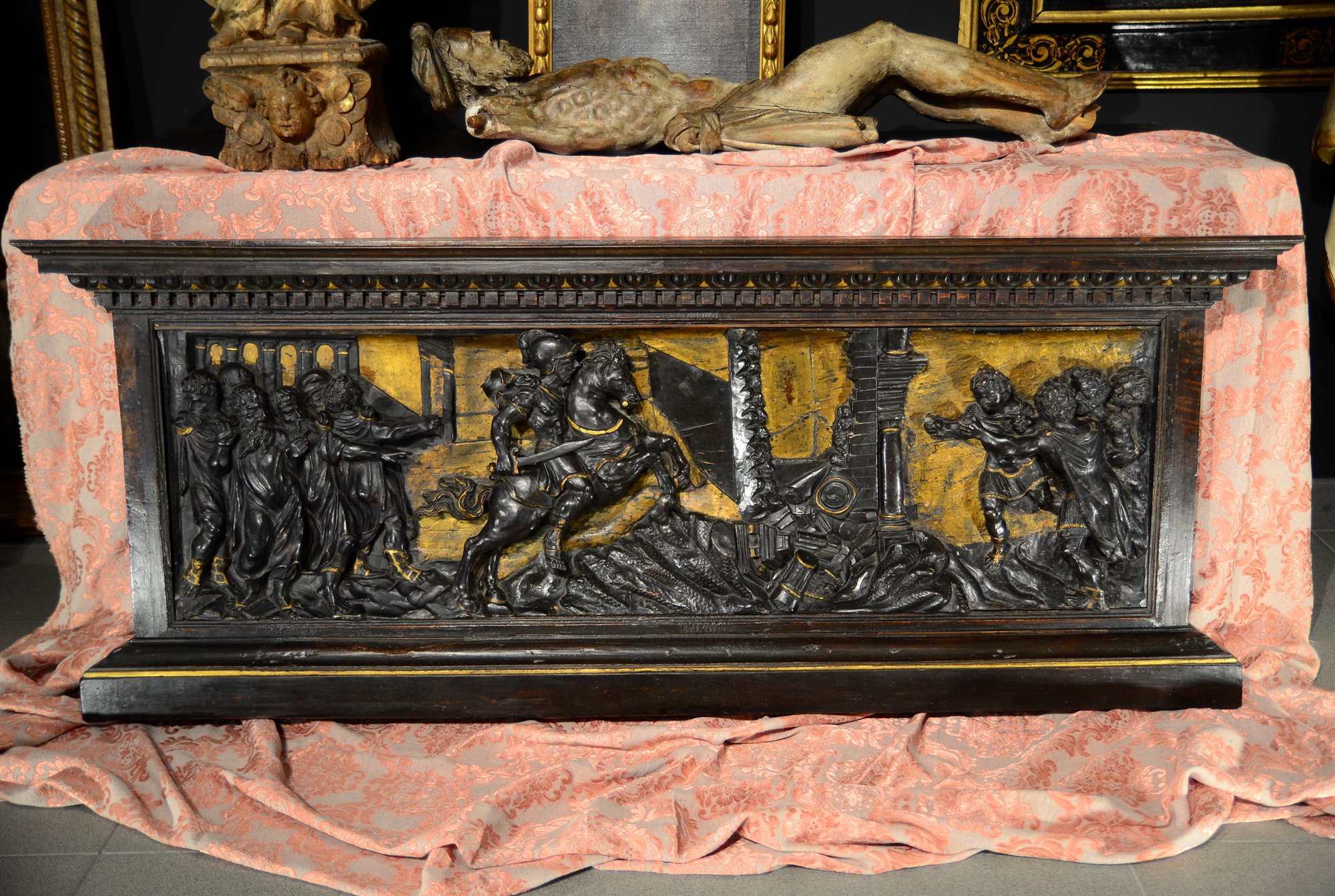Scultura rinascimentale ad altorilievo 'Scena bellica'
High-relief wooden sculpture, Roman renaissance early 16th century, 'War scene'
High-relief sculpture depicting a war scene, possible ‘Alexander the Great and the siege of Tire’
Roman Renaissance, first half of the 16th century
Carved walnut with golden backgrounds and details, table parceled on the back.
cm 64 x 162 x 15
The carving that characterizes this sumptuous Renaissance high relief is part of the typical Roman production of the first half of the sixteenth century, as testimony to the rapprochement with classical art that characterizes the major Italian centers, Rome and Tuscany in particular, starting from the fifteenth century. The models from which our sculptor must have drawn are those of Brunelleschi or Donatello, undisputed masters of Renaissance sculpture.
The work was probably placed over a fireplace or set in the boiserie of a Roman patrician palace. It shows an iconographic structure clearly inspired by the sarcophagi of antiquity, generally depicting episodes in the history of Greek and Roman, mythological stories or subjects of the Old Testament.
In the decoration, carved in a continuous manner, the warrior on horseback is given prominence in the central part that wields a sword; the compositional details would induce him to identify him as Alexander the Great, struggling with one of the most difficult and legendary battles of the condottiere, or the siege and conquest of the flourishing island of Tire. However, there are no details that would identify the episode with absolute certainty, which could therefore relate to mythology or to other references of Roman classicism, and in this case the condottiere could be Julius Caesar.
The panel, carved with a finely worked relief, highlights the strong dynamic tension of the composition, accentuated by the studied perspective construction. The characters are rendered in great detail: the details of the hair, the faces, the rendering of the drapery and the tension of the bodies highlight the skill of the carver.
Works with similar carvings:
- Equestrian battle between Romans and barbarians, Bertoldo di Giovanni, 1491 (Florence, Museo Nazionale del Bargello (https://www.akg-images.com/archive/Equestrian-battle-between-Romans-and-Barbarians-2UMDHU58ED65.html )
- Cassone of the Metropolitan, with the same gold highlights that decorate the chest, with scenes taken from mythological episodes and Roman antiquity (https://www.metmuseum.org/art/collection/search/460493)
- Pair of Italian caissons in carved and gilded walnut, Rome, third quarter of the sixteenth century (https://www.sothebys.com/es/auctions/ecatalogue/2016/treasures-l16303/lot.7.html)
- Deposition of Christ, Andrea Briosco Riccio (National Gallery of Art, Washington) (http://www.italianrenaissanceresources.com/wp-content/uploads/2013/03/RP_1281-1.jpg)
The architectural frame, carved with dentils and ovules, which completes the relief, is not contemporary with sculpture.
Guarantee and authenticity certificate (FIMA ITALIA - CINOA)






























